How to Grow Carrots in Containers Like an Expert
In this short and actionable guide, we will show you how you can grow your own carrots in containers or garden beds like experts.
Here are the key steps you need to take to grow carrots in containers:
Select the right container
Preparing the right soil
Sowing your seeds
Raising and caring for your carrots
Harvesting at the right time


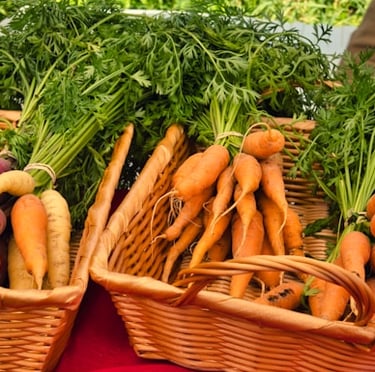





Selecting the Right Container for Growing Your Carrots in Garden Beds
Carrots are root vegetables with long taproots growing up to 25cm (10in) long so it’s important to choose a deep container for the variety you are growing.
Also, make sure your container has ample drainage holes.
The Optimal Soil Conditions
Carrots like a light, well-drained soil.
To achieve this, mix equal parts of sand and compost to fill your container, leaving a few inches of space at the top to prevent water overflow.
Our gardening experts often use soil from the garden, which is also a good option, but this only works well if you clean the soil from stones.
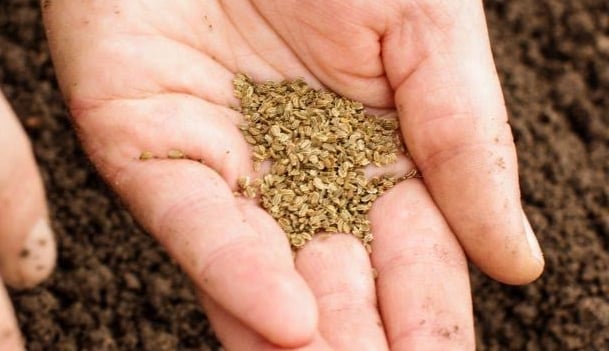

Sowing Your Carrot Seeds in Your Container
For the best possible growth, sow the carrot seeds directly onto the soil in your containers, and scatter them evenly.
When you do this, make sure they are spaced between 1-2 inches apart. Cover them with a thin layer of compost and gently press the compost down to ensure the seeds are in contact with the soil.
After you plant your seeds they will take about 1 to 3 weeks to germinate.
Caring for Your Carrots
After you plant the seed it is time for ongoing plant care like we do after planting any plant, no matter if growing flowers or growing herbs from seeds.
Growing Requirements of Carrots in Containers
We always place the containers in a sunny location and water regularly, because we found that this yields the best results. You want to keep the soil moist but not waterlogged. As the seedlings develop, thin them out to avoid overcrowding.
Pests and Diseases of Carrots
Carrots commonly face infestations from carrot flies, whose larvae feed on their roots. The most effective way to control these pests is to use insect-proof netting to cover your crop or create a barrier around the container.
But if you don't have the materials just try to keep the area clean and look for potential pests.
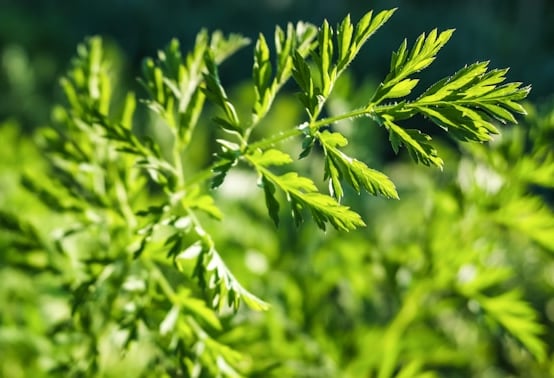





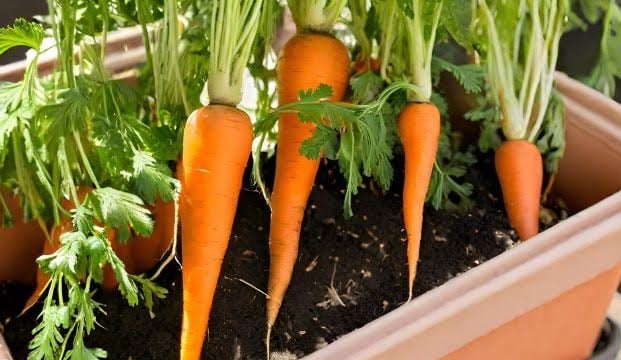




Harvesting Your Carrots
Carrots are ready about 12–16 weeks after sowing or when they are large enough to use. To check the size, carefully scrape back the soil from the base of the plant. To harvest, gently loosen the soil and carefully lift them from the containers, similar to harvesting beets or harvesting radishes in containers.
Storing Carrots
Carrots are best eaten fresh if possible similar to most other container plants and vegetables. They can be kept in the fridge for a week or two if necessary.
For long-term storage, they can be frozen. Blanch them first in boiling water to preserve their color and texture. Over winter, they can be left in the containers and lifted as and when they are required. Cover the plants in late autumn with straw to protect them from frost.
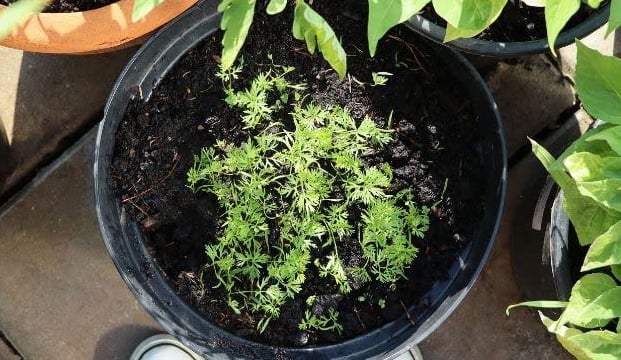





FAQ
How often do you water carrots?
Water your carrots to keep the soil evenly moist but not waterlogged. Once established, aim for about 1 inch of water per week, either from rainfall or supplemental watering.
In hot, dry weather, you may need to water more frequently to maintain soil moisture, this is a huge part of plant maintenance.
How do I make my carrots grow bigger?
Our multiple experiments show that for larger carrots, you need to grow them in loose, sandy, and well-draining soil to allow for easy root expansion, but also in garden beds with proper drainage. Thin seedlings early so each carrot has enough space to grow without competition, about 2 to 3 inches apart.
Regular watering, full sunlight, and providing balanced, low-nitrogen fertilizer can also encourage bigger growth.
What is the best compost for growing carrots in containers?
The best compost for growing carrots in containers is a well-draining, sandy mix with a balance of rich organic matter.
A blend of two parts garden soil, one part compost, and one part sand or perlite provides an ideal growing medium. This mix ensures good drainage and provides the nutrients carrots need without being too heavy or compacted, allowing for better root development.
Sources
Nature and Sustainability uses only high-quality sources, including peer-reviewed studies to support the facts we describe in our articles. Please read our editorial policy to learn more about how we keep our content accurate, reliable, and trustworthy.
Carrot soil: https://extension.umn.edu/vegetables/growing-carrots-and-parsnips
Watering and fertilizing carrots: Carrots: How to Grow It (sdstate.edu)
Carrot general information: Plant science at the dinner table: Carrots - 4-H Science, Technology, Engineering & Math (STEM) (msu.edu)
Plant carrot seeds: How to Plant Carrot Seeds (for Maximum Germination) (homesteadingfamily.com)
Share this article:




Article By:
Steve Hames, an expert gardener, growing a large variety of fruit and veg on his allotment in the UK. He also runs his own gardening blog: growharvesteat.com
Reviewed By:
Calin Oancea


Calin has been in the garden industry for 5 years and knows a lot about gardening and plants. He is the founder of this website and is responsible for most of the content.


